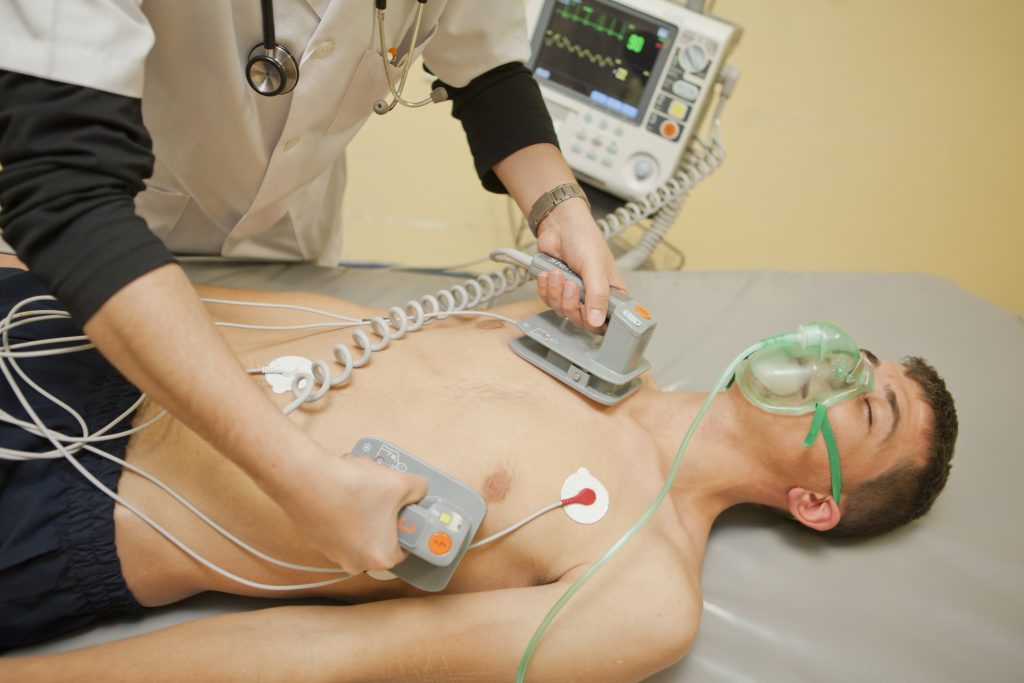The electrical cardioversion is performed in the hospital using a device called a defibrillator. The electric shock is delivered through two large stickers or paddles (electrodes) attached to the chest. The stickers are usually placed at the front and back of the chest or on the right and left sides of the chest.
This procedure is usually planned in advance and involves delivering a controlled electric shock to your chest targeting the heart. The electrical impulse is strong enough to briefly stop any electric signals generated by the heart and to let the heart’s natural pacemaker: “the sinus node”, regain control over the rhythm of your heart.

Before the cardioversion you will be given sedation (anesthetic) to make you feel drowsy, you will not feel anything during the cardioversion itself. If the first electric shock fails to bring your heart back into a normal rhythm (sinus rhythm) then another electric shock will be attempted using a slightly stronger electrical impulse. You should not feel any pain during the cardioversion but often the areas under the electrodes can be a bit sore for a day or two after the procedure.
You should be aware that even after a successful cardioversion (your heart rhythm has returned to normal sinus rhythm) it is possible that atrial fibrillation returns. This happens in about half of the patients during the first year after cardioversion. The chance of atrial fibrillation returning depends on many factors, but this is more likely if you have other heart problems (including high blood pressure) and if you have had atrial fibrillation for more than 1 year.

 Français
Français Deutsch
Deutsch Español
Español Italiano
Italiano Nederlands
Nederlands Polski
Polski Русский
Русский Svenska
Svenska Português
Português Hrvatski
Hrvatski Ελληνικα
Ελληνικα 简体中文
简体中文 العربية
العربية
